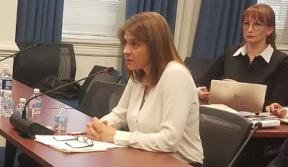Recently, Rep. Jim McDermott of Washington introduced an amendment to a defense spending bill that calls on the Department of Defense, in consultation with the Secretary of State, to "produce a map of mineral-rich zones and areas under the control of armed groups in the DRC" and to make the map publicly available. The map will be called the "Congo Conflict Minerals Map" and will be updated every 180 days. This amendment is an important component of the work that many people are starting to do to increase transparency in the mining sector in the DRC, linked to the electronics industry. The amendment is not a full accountability bill, but a more comprehensive bill is expected soon. In the meanwhile, the conflict minerals map will be helpful in identifying the mines that are most closely linked with armed groups and human rights abuses in the Congo. As companies go further in tracking their minerals from the Congo, this information will be very useful in instituting stronger policies to protect workers and communities affected by conflict.
We hope that legislators and businesses will build on this step forward and increase their efforts to end human and labor rights violations in the production of the electronics on which many of us depend.
Check out more thoughts on the amendment at "Enough Said," the ENOUGH Project's blog.
Also, check out this recent article from UNICEF about child labor in the mining sector in the DRC.


Comments
re: Moving Toward Transparency in the Electronics Industry
Large companies too often able to hide their complicity in labor and human rights violations behind complex supply chains. This map will be an important step towards transparency in the consumer goods market. (I'm also proud to say that Jim McDermott is my representative.)